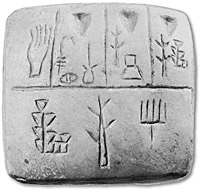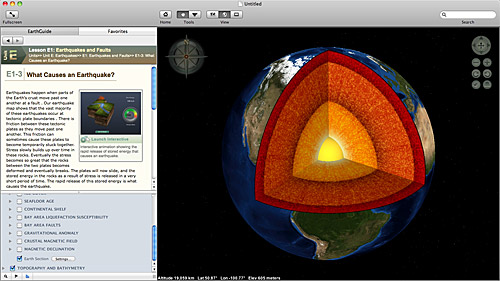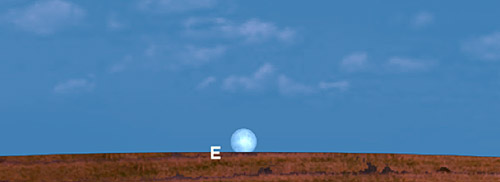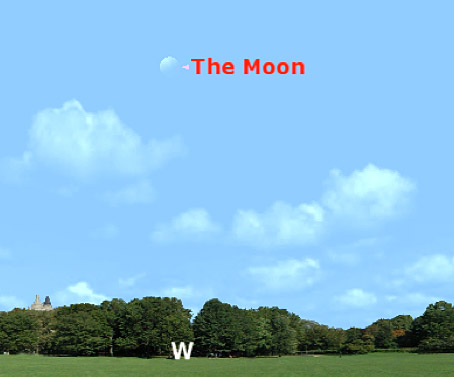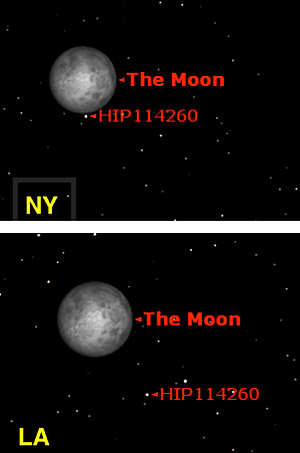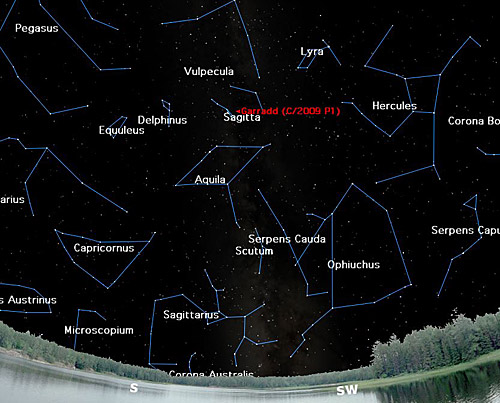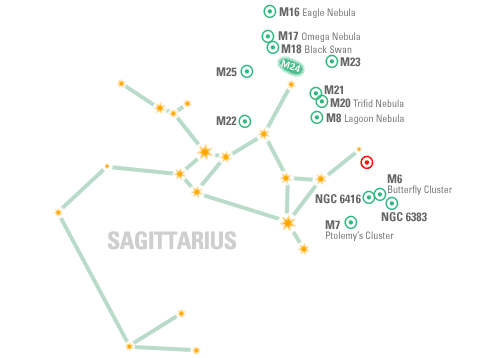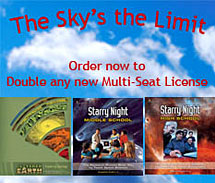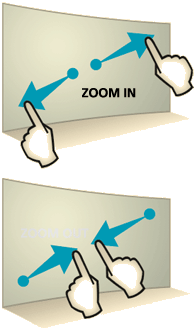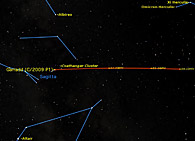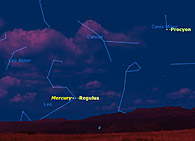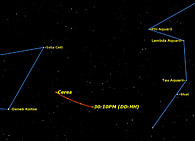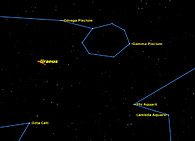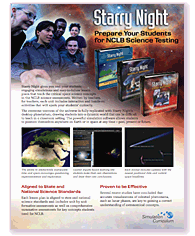 |
||||||||||||||||||||||||||||||||||||||||||||||||||||||||||||||||||||||||||||||||||||||||||||||||||||||||||||||||||||||||||
For education orders please call 1-877-290-8256. Welcome again to our monthly newsletter with features on exciting celestial and earth science events, product reviews, tips & tricks, and a monthly sky calendar. We hope you enjoy it!
The newest generation of the SMART Board™ interactive whiteboard supports multiuser writing and common multi-touch gestures recognized in Microsoft® Windows® 7 and Mac Snow Leopard®/Mac Lion®.
Starry Night® acquired a level three: Elite Accreditation – reserved for products that “have unique content or feature integration designed specifically for a SMART product. They easily integrate with SMART solutions and encourage the use of multiple SMART products to create a more interactive, yet simple, user experience”. Pedro Braganca
This has been a good summer for supernovae. In June we had a bright supernova in the Whirlpool Galaxy, Messier 51, and on August 24 a supernova was detected in the Pinwheel Galaxy, Messier 101, with the 1.2m Oschin Schmidt telescope at Palomar Observatory. (Those of you who haven't kept up with the metrification of telescopes may remember this as the 48-inch Schmidt.) This supernova is still brightening as I write, but is now visible in moderately large amateur telescopes, 10-inches aperture or more. Here's how to find it. Messier 101 is a bit of a paradox. It is one of the nearest, biggest, and brightest galaxies, an easy starhop from the Big Dipper, yet is very difficult to see, in fact one of the most difficult objects in Messier's catalog. This is because it has a very large surface area with very diffuse edges, so that it's very easy to just sweep over it with a telescope and never notice it. As I said, the starhop is an easy one. It starts at the famous double star Mizar and Alcor, in the handle of the Big Dipper:
As you can see, the Pinwheel is at one angle of an equilateral triangle standing on the end of the Dipper's handle. This isn't terribly helpful because the galaxy is so faint. A better approach is to start at Mizar and Alcor. They point to one end of a chain of 6th magnitude stars: 81, 83, 84, and 86 Ursae Majoris. Follow this chain, make a sharp right turn at the end, and you should see the nucleus of M101 glowing dimly in a dark sky. Once you've found M101, the problem becomes one of distinguishing between the supernova in the galaxy, and nearby stars in our own galaxy of the same apparent magnitude. Starry Night produces a pretty picture of M101, but it is based on a long exposure image of the galaxy which is far brighter than the reality:
Here is a much more realistic view of M101 showing the supernova, taken on August 26/27 by Tom Zaranek of the RASC's Toronto Centre with an 80mm Orion triplet apo:
This shows the galaxy itself as typically very faint, and the nearby stars in the Milky Way standing out. The supernova is marked with the two brackets. Geoff Gaherty
For thousands of years, in pre-literate hunter-gatherer societies, knowledge was passed down orally and through observation. Young people learned informally from their parents and extended family. Later in life, shamans, priests and other members of society became responsible for formally transmitting social values, shared attitudes, practices and rituals. The way people learned changed radically with the development of agricultural techniques such as irrigation and crop rotation that allowed people to grow food surpluses on farms. A food surplus meant that people could spend time doing things other than just looking for food. The result was the founding of cities, the division of labor and the birth of commerce. As civilization became more complex, oral tradition and the power of memory gave way to writing as a more permanent means of recording commercial transactions and administrative procedures.
Sumerian Tablet. One of the earliest known forms of writing, cuneiform script, The development of written language was a great technological advance in education. Ideas could be built upon previous ideas and transmitted from person to person across time and cultures. With writing came manuscripts, scribes, scholarship and new tools for learning. The invention of the printing press kicked off an “information revolution” on par with the Internet today. Printing press technology and the mass production of books completely transformed learning and educational practices. The book became a teaching machine. Standardization, made possible by the printing press, led to the modern textbook, which altered education by providing a new visual aid to learning.
Johannes Gutenberg invented the printing press around 1440. Today we live in the Information Age with digital representations of the sum-total of our knowledge and culture widely available and cheaply reproducible. As students begin a new school year, they are greeted with an array of technological innovations that are revolutionizing the way teachers instruct and students learn. The chalkboard is being replaced by interactive whiteboards (see our SMART Board article). Desktop and laptop computers are common sights in the classroom and lab. Touchscreen tablets are presenting new opportunities for classroom instruction and hold the promise of literally placing the entire curriculum at students' fingertips. Digital textbooks with multi-touch interfaces, breathtaking photography, animations, interactive info-graphics and audio are getting better and better each day. And although physical textbooks are still the prevalent mode of delivering curriculum, the transition to digital media is underway and it's happening quickly. Digital textbooks have many advantages over their print counterparts – they can be cheaper, better for the environment, weigh less and be updated easily. And they are just plain fun to use.
Digital textbooks present content in new ways by using multi-touch interfaces, But the implications of the information age go beyond the simple economics of delivering materials digitally instead of in print. Students have greater access and flexibility thanks to online collaboration technologies and video conferencing. Social media lets students learn from classroom peers and the wider global pool of learners. Classroom response systems are creating new levels of interactivity between presenter and pupil. And the latest simulation software and augmented reality technologies are bringing immersive environments and learning objects that encourage creativity, problem solving skills and retention. Starry Night and The Layered Earth are part of the breakthroughs and innovations that have changed the face of science education over the past decade, and the revolution is just beginning. The proof is clear that immersive learning technology such as 3D simulations have a positive effect on student achievement and motivation. It allows students to be engaged longer in the learning process as an active participant. The longer experience allows information to be recorded in an area of the brain called the Hippocampus, which normally is not stimulated through simple observation such as reading a paper textbook. Learning in an immersive environment through a 3D experience is a powerful way of teaching. Students are more motivated to learn, to remember and enjoy what was taught.
Immersive learning environments in The Layered Earth But learning objects in the form of immersive environments and simulations are not the same as a curriculum. A curriculum should target diverse learners, provide multiple means of expression and action and aim to engage in students' interests, among others. Both Starry Night and The Layered Earth have a research-based curriculum wrapped around their immersive learning environments and simulations. They aim to support both the teacher and the student. Educational technology in the classroom presents many opportunities but we must recognize the challenges too – such as affordability, implementation, training, legacy, accessibility and socioeconomic gaps. Bringing technological innovations into the classroom becomes easier if we go beyond traditional assumptions about learning, teaching and technology. We've done it before with the emergence of writing and the invention of the printing press. The classroom of today is at another intersection of learning, teaching and technology. It is an exciting time to be a teacher and a student. I only wish I had these tools available when I went to school. Pedro Braganca
It had to happen: summer is almost over and it's time again for lessons, homework and study schedules for teachers and students. Start the year off with the following ideas for the astronomy section of your curriculum. For Elementary School September is always a good time to study the Moon. The Full Moon in September is called the Harvest Moon. Traditionally, this designation goes to the full moon closest to the autumnal equinox. In two years out of three, the harvest moon appears in September, but every third year it occurs in October. At this time of year corn, pumpkins, squash, beans, and wild rice are ready for gathering; and at the peak of the harvest, farmers could work into the night by the light of this full moon. Most of the year, the Moon rises an average of 50 minutes later each night, but for the few nights around the harvest moon, the Moon seems to rise at nearly the same time each night: just 25 to 30 minutes later across the United States, and only 10 to 20 minutes later for much of Canada and Europe. A special name was reserved for those years that the harvest moon comes very late in September or early in October. In such situations, the full moon occurring immediately prior to the harvest moon (in late August or early September) was called the fruit moon or the barley moon. You can build up interest in your classroom by organizing a bulletin board of “Moon Shapes”. Have the students observe the moon at sunset (around 7 pm in New York) and make a sketch of its shape. Their work can then be pasted on the bulletin board along with the date. If you start on September 6 and observe daily, you and the students will “see” the Full Moon by Sunday, September 11. (Full Moon actually occurs on September 12 in the early morning hours.) If cloudy days intervene, you can always fire up your copy of Starry Night and check the Moon's appearance there.
The Harvest Moon rising near Kansas City on September 11, 2011. Other Ideas
For Middle School It's surprising how many students (and some adults) believe the Moon can only be seen at night. Because of its brightness, our Moon dominates the night skies when its above the horizon. But where does the Moon go when it's not in the night sky? Here is a simple little project that you can try with students from Grades 5 to 9 - observe the Moon in the daytime! Start with the Moon near Last Quarter phase and look above the western horizon. The graphic shows the Last Quarter Moon as seen from New York's Central Park at 10:00 a.m. on September 19th, 2011.
Have the students sketch the shape of the Moon and note its approximate position and the time. Repeat the exercise for several days and students will not only realize the Moon can be seen in the daytime skies but will also associate (with a little help perhaps) its steady eastward motion with the change in phase. For an extra challenge, you can use Starry Night to explain the geometry between the Sun, Earth and Moon that causes the phases of the Moon to change over time. Starry Night can also be used if the skies are cloudy or to check students' work. Other Idea Play some astronomy Jeopardy. The student(s) with the highest number of correct answers wins a prize. Questions can include: how many planets are there in the solar system? What is the largest planet in our solar system? smallest?, how long does it take for the earth to rotate once on its axis? is the Big Dipper a constellation?, how many stars are there in the Milky Way galaxy? What is the name of the north star? and so on. For High School or College Because the Moon is so much closer to us than the stars, its position relative to the stars at any given time depends on the observer's position on Earth. This effect is known as parallax. The graphics below illustrate this lunar parallax. Both pictures represent the Moon at the same time on the morning of September 12, 2011 but the left view is from New York City whereas the right view is from Los Angeles. It is easy to see how much the position of the Moon has shifted relative to the labeled star.
Using the files ParallaxLA.snf and ParallaxNY.snf you can determine the angular shift of the Moon relative to HIP 114260 as follows. Using the NY file, place the angular separation cursor on the Moon and drag it to HIP 114260. This will give the distance to the star from the center of the Moon. Repeat the measurement with the LA file and find the difference between the two measurements to determine the angular shift. For a bit more of a challenge:
Answer to last month's questions: The Belt and Sword of Orion are two common asterisms. Herb Koller
Some comets are like old friends, they keep coming back at regular intervals to visit. These are called periodic comets; Comet Halley was the first such comet to be identified, by Edmond Halley back in 1705. It returns to the inner solar system every 75 to 76 years; its last appearance was in 1986 and its next will be in 2061. At present Halley is out just beyond Neptune's orbit. Other comets are one-time visitors: they come in to visit us from the Oort Cloud, warm themselves for a few months by the sun, and then head back out to the farthest reaches of the solar system. All comets share one characteristic: they are like “dirty snowballs” in their makeup. Their nucleus of rock and ice, when warmed by the sun, sheds its ice which forms a graceful tail as it's swept away by the solar wind. Because it's the solar wind that drives the gas and vapor away, comet's tails always point away from the sun. In the sky, many comets appear like ghostly fingers pointing down towards Earth. That is one reason why comets have traditionally been viewed as harbingers of death and disaster. To astronomers, on the contrary, they are objects of great beauty and attract close scientific scrutiny for the information they reveal about the ancient history of the solar system and its farthest reaches. There are two comets currently visiting the inner solar system, so the next two months will provide some excellent opportunities to observe these unusual visitors. Comet Elenin (C2010 X1), you may have heard about, because it's become a popular item for the gloom and doom crowd, who see portents of disaster in ordinary astronomical objects. The truth about Comet Elenin is that it is a quite ordinary, fairly small comet discovered on December 10, 2010 by Russian amateur astronomer Leonid Elenin using a remote controlled telescope in Arizona. This comet will pass closest to the sun on September 10 (45 million miles or 72 million km.) and closest to Earth on October 16 (22 million miles or 35 million km.) Despite the fact that this is a really tiny body, 3 or 4 km. in diameter which will miss the Earth by 22 million miles, the purveyors of gloom and doom have seized upon it as bringing disaster upon the Earth. Please don't take them seriously, instead try to spot this interesting little object. At present Comet Elenin is too close to the sun to be viewed from the northern hemisphere. But there is another bright comet in the night sky that hasn't received the publicity of Comet Elenin but is actually a better opportunity for sky watchers. This is Comet Garradd (C2009 P1). It was discovered on August 13 2009 by Australian astronomer G. J. Garradd. Comet Garradd is very easy for any experienced sky watcher to locate and observe with binoculars or a small telescope. Currently it is located in the small but well-known constellation of Sagitta, the arrow. This arrow-shaped constellation is right in the middle of the summer triangle formed by the bright stars Vega, Deneb, and Altair.
On Friday September 2, Comet Garradd will be right by the “hook” of the popular Coathanger Cluster, also known as Brocchi's Cluster. It is currently around 8th magnitude, just barely visible in binoculars but a nice fuzzy streak in my 80mm and 127mm refractors. The comet will continue moving westward and brightening, reaching magnitude 7.0 on February 12.
The chart shows the position of Comet Garradd at 11 p.m. EDT each night from September 2, through September 15. Comet Garradd is in the Starry Night comets database, so you can track it through the fall. Geoff Gaherty
Comet Garradd Comet Garradd is moving westward and brightening until it reaches magnitude 7.0 on February 12. An easy object for binoculars and a rare treat for sky watchers. Pedro Braganca
M8 "The Lagoon Nebula" is the brightest nebula after the great Orion nebula. It's actually more massive than M42 but is farther away: 4,500 lightyears distant compared with 1,500 lightyears. M8 is best viewed with a wide-field eyepiece. Less spectacular, but still worth some time, M20 "The Trifid Nebula" is also easily seen in binoculars; a telescope will bring out the dust band that gives the nebula is shape and name. M21 is a small rich open cluster in the same field of view as M20. M23, excellent in small scopes, is an open cluster seen in binocs, as is M25. M24 "Delle Caustiche" is a large and lovely "frothy" looking region seen easily in binoculars. It's actually part of the Milky Way and only stands out as a distinct patch because, like M23 and M25, it sits in front of a dark nebula that obscures our line of sight to the core of the galaxy. (By the way, the very center of our galaxy is marked above with a red target symbol.) M22 is a sweet globular cluster, the third-brightest in the sky. Populated by half a million stars, it's distant by a mere 10,000 lightyears, making it the nearest glob to Earth. M16 and M17 are two nebulae, the latter in particular a rewarding target. M16, however, is notable for being the location of "The Pillars of Creation" the iconic image produced by the Hubble Space Telescope. M18 "The Black Swan" is a pretty open cluster with about 40 members, surrounded by fainter background stars in the band of the Milky Way. Close-by in Scorpius, M6 and M7, two open clusters, are bright and obvious, and make for easy binocular objects. Telescopes open up both in rich detail and M6 is seen to be aptly named "The Butterfly Cluster". NGC 6416 is a small open cluster and NGC 6383 is a dim, wide cluster with nebulosity. Sean O'Dwyer
|
SEP 2011
|
|||||||||||||||||||||||||||||||||||||||||||||||||||||||||||||||||||||||||||||||||||||||||||||||||||||||||||||||||||||||||

|
||||||||||||||||||||||||||||||||||||||||||||||||||||||||||||||||||||||||||||||||||||||||||||||||||||||||||||||||||||||||||
|
||||||||||||||||||||||||||||||||||||||||||||||||||||||||||||||||||||||||||||||||||||||||||||||||||||||||||||||||||||||||||

 EDUCATION ORDERS 1-877-290-8256
EDUCATION ORDERS 1-877-290-8256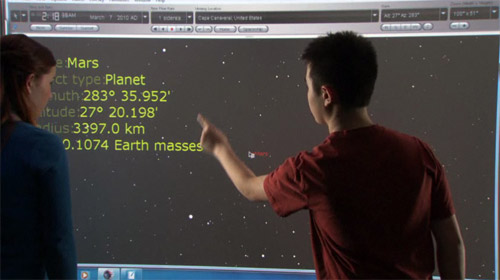
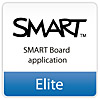 Starry Night® now supports specific finger-gestures and pen-gestures that allow you to take full advantage of Starry Night on your touch-enabled SMART Board™.
Starry Night® now supports specific finger-gestures and pen-gestures that allow you to take full advantage of Starry Night on your touch-enabled SMART Board™.


